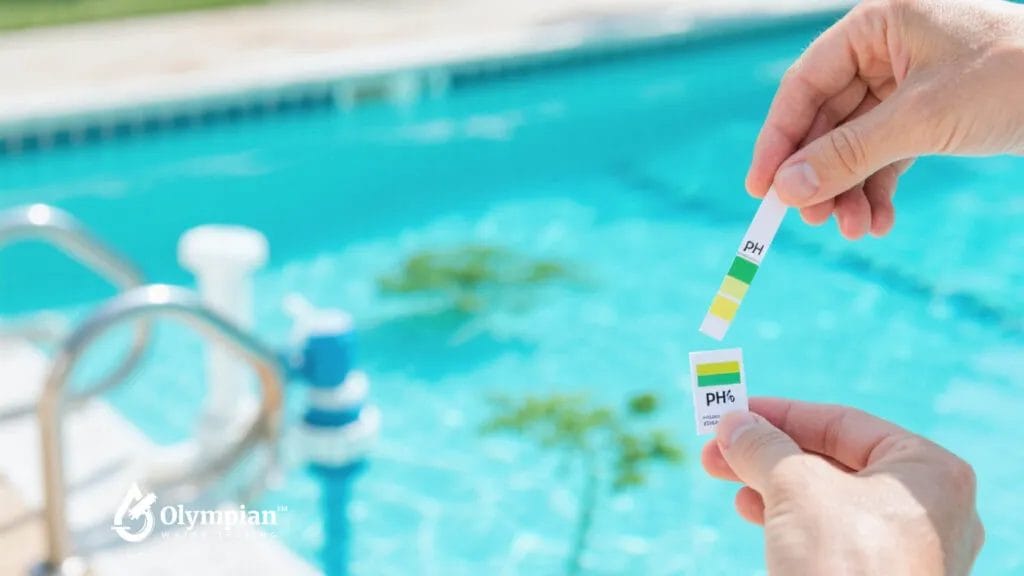
A clean and safe swimming pool means more than just sparkling, clear distilled water. It means a proper chemical balance to keep swimmers safe and equipment in optimal condition. Of course, one of the most important tools in maintaining that equilibrium is the lowly chlorine test strip. In this blog, we will cover exactly why these narrow strips are essential to pool care, plus explain how they work, and how testing regularly can save you time, money, and headaches. Whether you are a new pool owner or looking to refine your cleaning routine, knowing your chlorine levels is fundamental to enjoying a healthy swimming pool season.
Chlorine 101: What You Need to Know About This Essential Pool Chemical
Chlorine: The Unexpected Hero of Pool Maintenance
As an effective disinfectant, chlorine helps prevent the growth of harmful pathogens, bacteria and algae in the water, which is crucial to keep swimming pools safe and clean. Its effectiveness comes from the fact that it oxidizes organic material, which breaks down waste and impurities that can affect water quality. Chloramine is the compound formed when chlorine combines with ammonia and nitrogenous waste, which occur when chlorine comes into contact with a pool’s water. This reaction is good for sanitation but can fail to provide adequate disinfection due to decreasing chlorine levels without regular monitoring and testing protocols. Although related to chloramines presents challenges, like a foul smell and skin irritation, it is also the main reason chlorine is the primary chemical for maintaining pools due to its cheap cost and abundance.
Learn the Difference Between Free & Combined Chlorine
Maybe in one of your endeavors of pool chemistry, you might have heard about free chlorine and combined chlorine, we need to know this differs from each other and how can we use each to sanitize the water. Free chlorine is the part of chlorine which is there to actively destroy bacteria and act as a sanitizer. This is the level we want to keep high so that the pool can be effectively sanitised. In contrast, combined chlorine (commonly called chloramines) is chlorine that has reacted with contaminants and is not as effective in giving you sanitization. It is critical to know how much of each type of chlorine you have — a pool needs a free chlorine total of 1-3 parts per million (ppm), and combined chlorine should be less than 0.5 ppm. Too much combined chlorine in the pool results in water that is unsanitary and also unpleasant for the swimmer, causing irritation and discomfort in their eyes.
Chlorine Test Strips Demystified & A Pool Owners Best Bud!
You may also like: Reading Chlorine Test Strips Like a Pro
Chlorine test strips are a tool that can help you maintain the best condition of your pool water, but mastering the use of one can be beneficial. The tools are easy to use and serve as a way to quickly measure free and total chlorine levels based on a relatively simple but effective colorimetric reaction. The instructions from the manufacturer would also indicate how long to just stick the strip into the pool water for (i.e. a few seconds). Once you have removed the strip, give it the time it says on the packaging for the color to settle and then compare the resulting colours against the chart on the back of the Packaging. Make sure to test in good lighting because color perception gets warped in low light. For more accurate readings, you should test at multiple locations in the pool, especially if it is large or contains areas of poor water flow.
Guide to Selecting Test Strips — Advised Before Buying
Well, there are a number of things to keep in mind when choosing chlorine test strips as they make a big difference to your pool maintenance routine. There are many kinds of test strip, starting from multi-test strips that measure more than several chemical parameters (pH, alkalinity, etc.) to chlorine only. Quality strips will typically test for not just free and combined chlorine, but stabilizer levels, pH balance, and alkalinity as well, giving you a lot of information about the condition of your pool’s chemistry. In addition, compiling reviews and ratings of their products measures how reliable and dependable the brand are. Apart from that, make sure that you are picking up the strips that are going to last as per your testing services: Expired test strips will surely provide incorrect readings which are going to impact your pool maintenance. Choose strips that have unambiguous, straightforward color charts for reading.
What People Donot Know About Chlorine And Its Impact On Pool Health
If I pointed out incorrect beliefs about chlorine points chloride we are able to balance Comics vs. fact that chlorine Level
Confusion on what constitutes a significant chlorine level in their pool often creates a barrage of myths regarding pool sanitation that cause misconception for many pool owners. The belief that any chlorine in the pool is fine is one of the most prevalent unrealistic expectations. Actually, there is too much chlorine in the water, therefore, it is embedded in the sanitation of the swimmer safety, but it will be healthy only when dissolved in the adequate amount of water. The other myth is that it is the chlorine that makes the pool water smell, when in fact, the unpleasant smell is caused by the chloramines (combined chlorine) not the chlorine itself. This makes it imperative to dispel these myths as it will help owners to pay attention to the test and maintenance practices instead of working on incorrect assumptions; all of which can help with better pool health.
Too Much Chlorine? Recognizing the Signs and Solutions
High concentration of Chlorine would also harm the swimmers as well as your pool. Ranging from itchy skin, irritated eyes, and breathing problems among those more sensitive to higher levels of chlorine. Combining chlorine levels are high, and you can tell by the overbearing “chlorine smell” typically associated with swimming pools, when water chemistry is out of balance. Pool owners should use chlorine test strips regularly to check on how much chlorine is in the water and act accordingly when there are any signs of excessive dosing of chlorine. However, if the levels of chlorine detected exceeds the recommended limits, then you can dilute your pool with fresh water to rectify this effectively and very simple. Also, letting the sunlight to scatter the chlorine, which is photodegradation, can be very helpful to reduce its levels as well, especially on sunny days.
How To Keep Chlorine Levels In Range — The Bottom Line
Developing A Regular Testing Schedule: Maintain A Sparkling Pool
To have a stable schedule of testing is invaluable for pool owners who want to balance more to fine tune their chlorinated water and make it clean and clear. The best practice is to test no less than twice a week in the warmer months and once a week in the cooler months. It enables you to identify any possible imbalances before they turn into major preventions like algae blooms or swimmy irritation. Test in the morning or late afternoon to minimize temperature and sun exposure fluctuations that may influence chlorine readings. Keeping a log of your test results can also help you track changes over time and decide how to best care for your pool. Besides that, it also helps to ensure that your pool is a healthier place for your family and friends to swim.
Other chemicals that can help boost the effectiveness of clothianidin
Several other factors can affect the effectiveness of the disinfectant properties of chlorine, apart from its levels. One of the main actors is the pH value of your pool water; ideally, your goal is to keep the pH between 7.2–>7.6 to ensure optimal sanitation. Chlorine will work better at these levels, any movement beyond this range will see a reduction in effectiveness and require more chlorine to provide the same level of disinfection. Second, total alkalinity is a key player in pH stability and chlorine efficiency as it acts like a buffer to assist in maintaining the desired pH. Another key is a balanced calcium hardness, because overly soft water or too much can affect the corrosion of the network and/or scaling. A complete chemical balance for pool water sanitation and swimmer comfort is created with these parameters and chlorine levels with regular testing.




